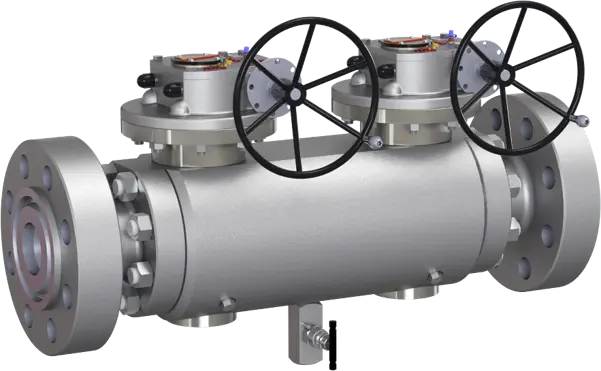
Structural Attributes:
A typical DBB (Double Block and Bleed) valve comprises two ball valves interconnected with an intermediate bleed valve, forming a compact configuration. These ball valves, known as the primary and secondary valves, can be operated independently to regulate fluid flow. The bleed valve serves the purpose of releasing media or relieving pressure, ensuring pipeline safety.
Functionality:
The DBB valve achieves simultaneous bi-directional sealing. Upon closure, both primary and secondary valves seal the pipeline, halting fluid flow. The bleed valve facilitates the release of residual media or pressure, guaranteeing safe pressure relief and ensuring pipeline integrity.
Advantages Over Standard Ball Valves:
1. Compact design, suitable for applications requiring stringent pipeline sealing and safety standards.
2. Capable of achieving bi-directional sealing, mitigating leak risks even if one valve fails.
3. The bleed valve enables safe pressure relief, enhancing overall pipeline safety.
Applications:
DBB (Double Block and Bleed) valves find extensive use in various industries including petroleum, natural gas, chemical, and pharmaceutical sectors, particularly in applications necessitating bi-directional sealing and safety bleed functionalities.
With its unique design and functional prowess, the DBB (Double Block and Bleed) valve meets the exacting demands of specialized applications, serving as a crucial component for ensuring pipeline integrity and safety.
